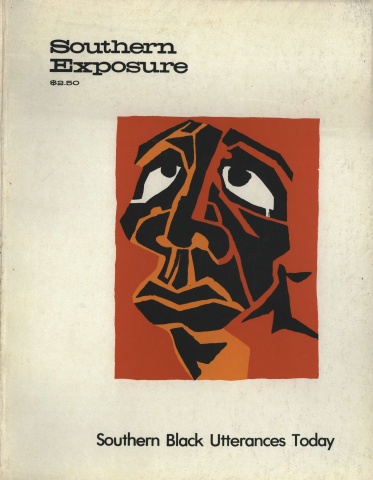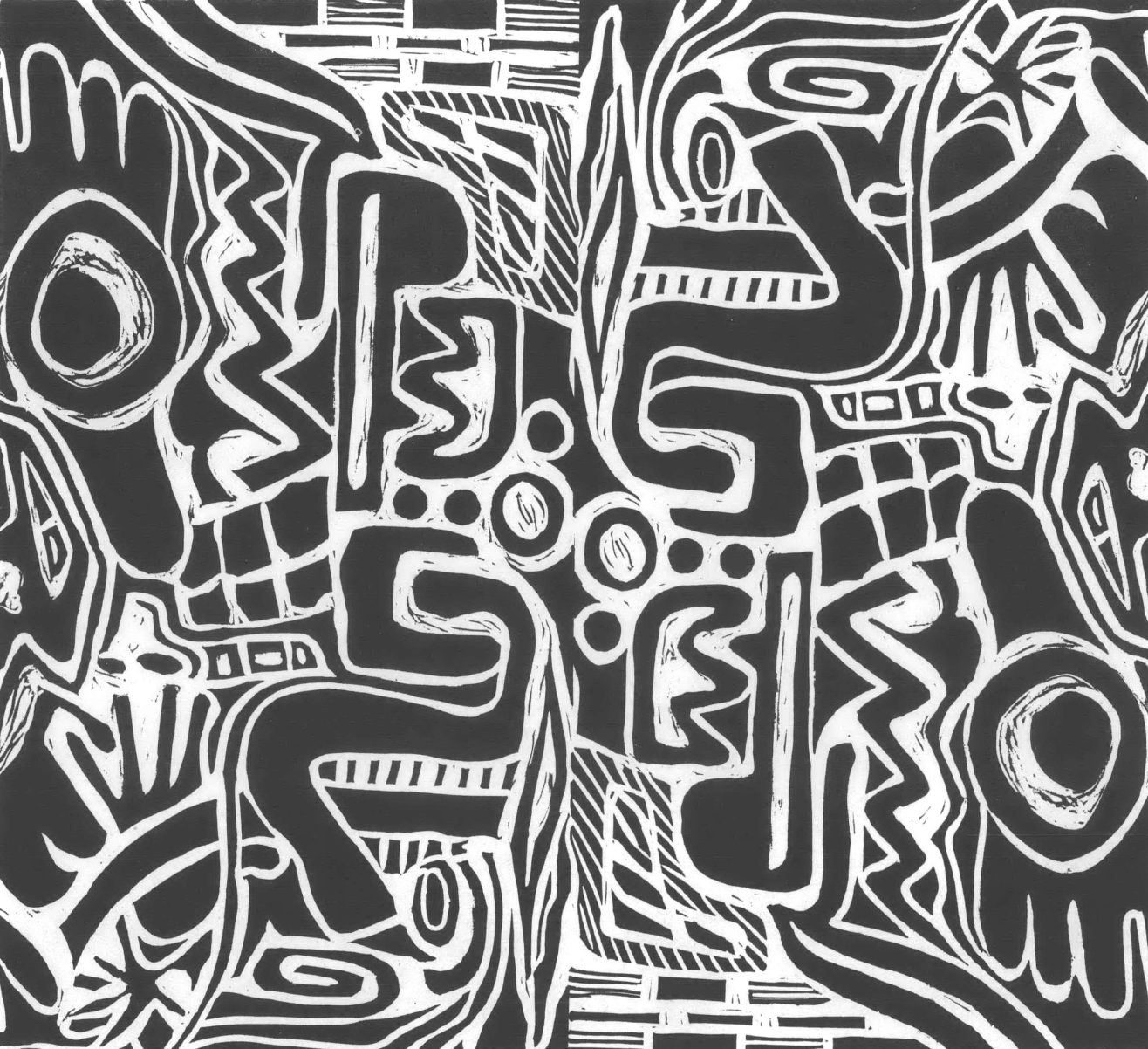
This article originally appeared in Southern Exposure Vol. 3 No. 1, "Southern Black Utterances Today." Find more from that issue here.
In some ways 1974 has been the year of Pan-African re-assessment. The calling and holding of the Sixth Pan-African Congress at Dar-es-Salaam and the extensive reporting of and reacting to it in the black world have brought Pan-Africanism to a high pitch of general awareness that it has not hitherto experienced. It is still safe to say, however, amid the hue and the cry, despite the intervals of intellectual and ideological flag-waving and stand-taking, that Pan-Africanism is still not a vital concern of the black man in the street. How many of the readers of Ebony, for example, are likely to have read carefully and pondered the implications of Lerone Bennett's report on the Sixth Congress? I leave the answer to your speculation and, I hope, to somebody's research.
Another graver issue raises its head. The fear has been expressed that many of the Afro-American brethren who attended the conference found the discussion halls less attractive than the other delights of Dar. In consequence, even the numbers who attended cannot be taken as prima facie evidence of commitment to whatever definitions of Pan-Africanism might be adopted.
Finally, among the earnest, the dedicated, the agonized who followed the sessions from near or from afar, there were many whose knowledge of the real world, of the history of Pan-Africanism, of what is possible, with and for whom, was so incomplete and fragmentary as to make their interest a mockery of itself. I do not wish to imply for a moment that realism, in any conventional sense, was ever a requirement for the Pan-African commitment. Indeed, an anti-realism was almost necessary, but it was the anti-realism of those who in fact knew the real world and opposed their ideals to it.
The first wave of Pan-Africanism is summed up in the Pan-African Conference called by Sylvester Williams in 1901. It was a reaction on the part of articulate blacks of the diaspora to the carving up and conquest of Africa that had been unleashed by the Belgian intrusion into the Congo and the subsequent Berlin partition. It was a lonely protest, almost futile. Du Bois attended and was its secretary. The time was not propitious for another invocation of the spirit of Pan-Africanism until after the First World War, the first great cataclysm of Western imperialism. Du Bois, then acting upon two decades of close observation, thought it possible to motivate some tentative steps toward African political independence in the context of Western statism by influencing the treaty-makers to apply the Wilsonian principle of self-determination to Africa, which was of course not at all envisioned in President Wilson's proposals. The effort, idealism combatting realism, was not successful. The Pan-African Congress of 1919 was a bold and grand gesture. The succeeding three Congresses had less and less reverberation.
It does violence to a history of Pan-Africanism not to place Garvey in its full framework. The United Negro Improvement Association was another Pan-African venture, one based on mass feeling rather than on political awareness. It was another thrust from the diaspora to Africa in an attempt, more specific and passionate than that of Du Bois, to give utterance to black dignity despoiled first by slavery, then by colonialism. It was nevertheless a reactionary movement, seeking not to change the institutions of imperialistic capitalism, but merely to appropriate them from white hands to black hands. Garvey was a visionary, but never a revolutionary.
The Great Depression, the second cataclysm of Western imperialism, did not evoke any Pan- African surge, for the Pan-Africanism of the diaspora was essentially and ironically dependent on the ability of its protagonists to take trains and ships to meet and confer. The Depression considerably reduced that potential. Nevertheless I do not descry in this period any important impulse toward Pan-African activity in the diaspora.
At this point a major element in the record of Pan-Africanism must be faced. The impulse for Pan-African organization and action -is itself a phenomenon of Western political dominance. There is no key or clue to it in the traditional political societies of Africa. Practically considered, when we speak of Pan-Africanism we are dealing with an impulse generated by blacks of the diaspora, outcasts from the only political systems they knew and valued. Impulse gives rise to two myths, a myth of combat and a myth of becoming. The myth of combat is directed against the white European hegemony of the post-medieval world. The myth of becoming is an idyllic myth of a peaceful world in which full political rights would be enjoyed by all black people, and it is based upon the assumption that black people, at least, would never interfere with the enjoyment of political rights of people of different color. I use the word myth here as a morphological term with no implication that the ideas so described lack the possibility of implementation.
The cataclysm of the Depression merged into that of the Second World War, and this in turn inspired the next surge of Pan-African activity and the Fifth Congress which was the first actually able to map strategies which would eventually bear fruit in the chancelleries of the West. Du Bois, already 80 years at this time, was an honored observer at the meeting, but not by any means a major mover or shaker.
There is a direct link between Nkrumah's participation in this conference and his subsequent international activities as Ghana's chief of state. The goal of Pan-Africanism was in no way served by the piece-meal liberation of bite-sized territories originally created in various colonial offices. The so called de-colonization of Africa was designed to be as undisruptive of world-wide arrangements as possible. On the other hand, apart from Nkrumah, there developed in Africa itself no Pan-African spokesmen who envisaged anything beside the patch-work quilt governments based on imperialism's handiwork. The Organization of African Unity, really the organization for African disunity, is obviously a formalization and an institutionalization of the patch-work system. Nevertheless there is a sense in which the OAU constitutes at least a putative realization of the earlier Pan-African ideal. Politically independent black African states sit down and deliberate and otherwise go through the motions of Western statism.
From the diaspora, once more has come the demand, this time for a newer, truer, higher, purer Pan-Africanism. But since this call is now directed to active and functioning African states a world of questions has emerged, some of which must now be considered.
In what way or should Pan-Africanism consist beyond the attainment of political structures in which black people have the potential for self-expression? Obviously, if this were to be the only goal, the liberation of the remaining parts of black America under European domination, would be the remaining task of Pan-Africanism. Obviously, that is task enough. Equally obviously, the nature of the political entities and the quality of self-expression within them is left essentially untouched by a mechanical application of the principles. The actual reality of the present African states is not lovely to contemplate. And it is the fashion to leave to others the criticism of those states where authoritarianism, arbitrariness, and graft effectively serve to keep the majority of the population locked into a condition of colonial bondage.
If I do not read amiss, however, the new idealism of the diaspora, and an idealism which is found here and there in Africa by those who are mainly in exile from their homelands, the new goal of Pan-Africanism must be the liberation of black people. Here the ideal comes up fully against the African reality. For the people so glibly spoken of by the rhetorician are in fact peoples locked in immemorial and pre-colonial patterns of antipathy, enmity and mutual contempt. An attempt at creating a Pan-African strategy which ignores, underplays, or merely ascribes this situation to superogatory institutions is an evasion of reality, however fervent its idealism.
The interdependence of political expression and economic matrices was never lost on Du Bois and, a life-long socialist, he understood the oppression of Africa to be an expression of capitalistic expansion under the aegis of imperialism. What Du Bois and many thinkers from Marx to the present have missed is that capitalism, or more precisely human beings committed to the capitalistic mode of expression, have been able to modify and to generate structures which assure its continuation. And indeed, as I have already indicated, the Pan- Africanism of Garvey, and the only form up to now communicated to a mass (note, I do not say to the masses) was a capitalistic Pan-Africanism.
I have already said that Pan-Africanism in its original expression, and it is true today, is a myth of combat. What it has always combatted is the white European domination of blacks, which is based on a racist perception of humanity. Hence Pan-Africanism while possibly anti-capitalistic is certainly anti-racist.
It has been fashionable for critics of capitalism to perceive it as the creator of racism and to offer as a self-evident proposition that the demise of capitalism will automatically bring the cessation of racism. If there is any evidence in this matter, it clearly demonstrates the opposite. Racism is an independent current of the human spirit, which may live in symbiosis with any political or economic situation. It is indeed unhistorical to link it to any period or place. Its importance, its resonance, may vary as we shift our range of vision, but its relative permanence in the human equation can hardly be dismissed by those who think that theory should follow, rather than precede, observation.
To wed the new Pan-African vision to a hide-bound theory of economic systems as some are proposing to do at this juncture is to abandon the struggle for a chimera. To ignore the nature of the clientele to whom the new Pan-African vision is directed is to essay an elitism which contradicts its own purposes. To fail to recognize the essential differences of the diaspora which has been the source of Pan-African energies and the African matrix to which it reaches out, and to fail to confront the psychological morass from which the diasporic energies proceed is to fail to advance Pan-Africanism beyond its 1945 stage. Pan-Africanism, a myth of becoming, must not be subordinate to the ideas, the institutions, the theories of the past. Rather it must hold fast to the dawn-like vision it presented to the hopeful eyes of those who greeted the twentieth century, and looking across a sea of gloom, saw not a gleam but a reservoir of hope and African fulfillment.
Pan-Africanism must not become the tool of doctrinaire nationalistism or internationalistism more concerned with the survival of forms than with liberation. Pan-Africanism, indeed, must not be considered as a means to the creation of new institutions, each potentially oppressive, but as a means of understanding and modifying existing institutions towards open-ended activity on behalf of the victims of racism and economic exploitation. The ultimate challenge to Pan-Africanism is to be unlike any force hitherto known in history in the hope that it will itself be a major innovation in human history and a source of endless hope and joy to the children of Africa.
Tags
Richard A. Long
Richard A. Long is director of the graduate program in Afro-American studies at Atlanta University. His articles and poems have appeared in numerous journals. (1975)

